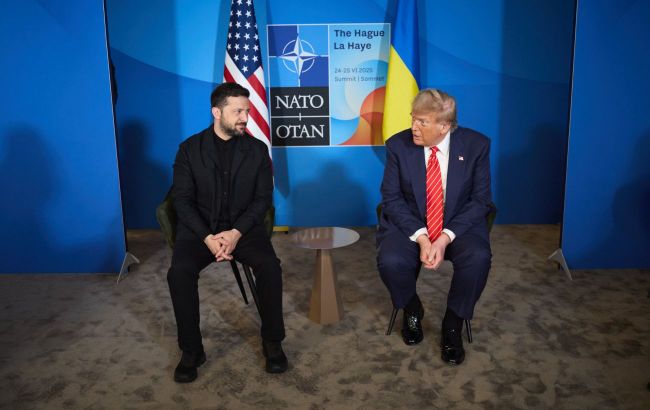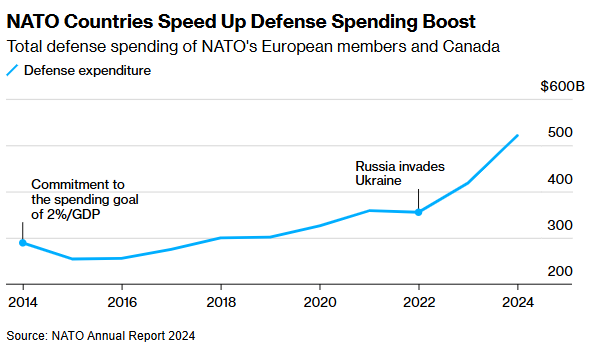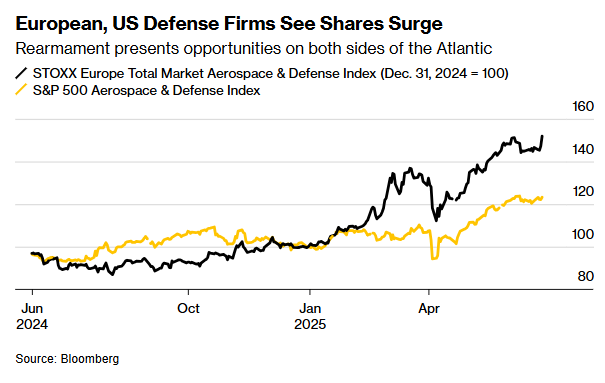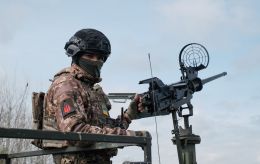Europe hesitates to buy US weapons over Trump’s Ukraine policy — Bloomberg
 Photo: Volodymyr Zelenskyy and Donald Trump (president.gov.ua)
Photo: Volodymyr Zelenskyy and Donald Trump (president.gov.ua)
European leaders faced an awkward choice after approving the largest increase in defense budgets. "Buy American" has become difficult due to Donald Trump's public threats and his attitude toward Russia, Bloomberg reports.
As the agency notes, it is not easy to explain to voters why, with defense spending rising to 5% of GDP, a significant portion is spent on purchasing American systems.
European leaders are concerned that they may be exposed to greater risk if they increase their dependence on the US, whose president has embraced their main enemy, Russia, and frightened some with threats to annex their territory.
Trump's sudden decision to temporarily suspend intelligence sharing with Ukraine earlier this year alarmed allies. Officials said there were fears that the US could cut off American weapons in the event of a crisis.
The concern became so strong that the Pentagon had to issue a public assurance that the F-35 fighter jet did not have a kill switch.
Position of allies
Allied leaders, such as French President Emmanuel Macron, insisted on relying on European companies for weapons supplies, and the EU accelerated the allocation of €150 billion for this purpose after Trump's election.
Canada is considering withdrawing from the US-led F-35 fighter jet program and purchasing Swedish aircraft instead.
"We should no longer send three-quarters of our defense capital spending to America," Canadian Prime Minister Mark Carney said earlier this month.
When a group of US lawmakers traveled to Copenhagen this spring to urge Danish officials to buy more American weapons, the message they received was clear: we like your weapons, but Trump's public threats to seize Greenland, a Danish territory, make purchasing them politically difficult...
Some Danish politicians went even further. "Buying American weapons is a security risk that we cannot run," conservative lawmaker Rasmus Jarlov, who heads the parliament's defense committee, said in March in a post on the conservative parliament website.
No alternative
However, EU leaders face the reality that they will have to rely on the US for many of the new weapons they plan to purchase. This idea was conveyed to them by President Donald Trump during his visit to Europe this week.
But the planned build-up — costing up to €14 trillion over the next decade, if you include the related infrastructure, according to Carlyle — far exceeds the current capabilities of a fragmented European defense sector that has been ravaged by decades of cutbacks since the end of the Cold War.
And US leadership in key areas, particularly missiles and other high-tech weapons, means that there is often no real alternative to buying American.
"Europe and the defense industry is not, at the moment, ready to take the load by itself," said Tuure Lehtoranta, senior executive director of Finnish defense technology company Insta Group Oy. "There’s not enough production, there’s not enough design in some areas."

European allies will have no choice but to purchase American weapons to achieve the alliance's goals, especially given the depletion of stocks due to deliveries to Ukraine, said a senior NATO official who asked not to be named.
German Chancellor Friedrich Merz, whose government plans to nearly double spending on core defense items this year, said European industry needs a major overhaul to meet demand.
Europe has no rivals as advanced as Lockheed Martin's F-35 fighter jet or RTX's Patriot missile defense system, which has been crucial in protecting Ukraine from Russian attacks.
The allies have no competitors for key capabilities such as missile defense and air refueling. Although simpler weapons, such as howitzers, are easier for allies to produce, they still need American satellite systems for precision guidance.

This week, the UK announced that it would purchase at least a dozen new F-35A fighter jets, which Prime Minister Keir Starmer hopes will help win Trump's favor.
European manufacturing
European defense companies are full of confidence. This year, they have seen their share prices rise by 50% or more, even outperforming the strong performance of their US competitors, as investors anticipate huge business growth.

"More urgency is there now," Micael Johansson, CEO of Saab AB, which manufactures Gripen fighter jets, said in an interview. "I wouldn’t say we have seen a dramatic shift now to buy more European, but I think that’s the trend."
Prospects and trends
At the NATO summit in The Hague, leaders agreed to increase defense spending to 5% of GDP by 2035 under flexible rules for accounting for “defense-related” expenditures. This will give Europe time to ramp up production, but it will do little to help in the short term.
While Europe is increasing its budgets, the US will maintain its leadership in high-tech weapons. Unless European companies form large consortia and accelerate development, dependence on American systems will continue for decades.

